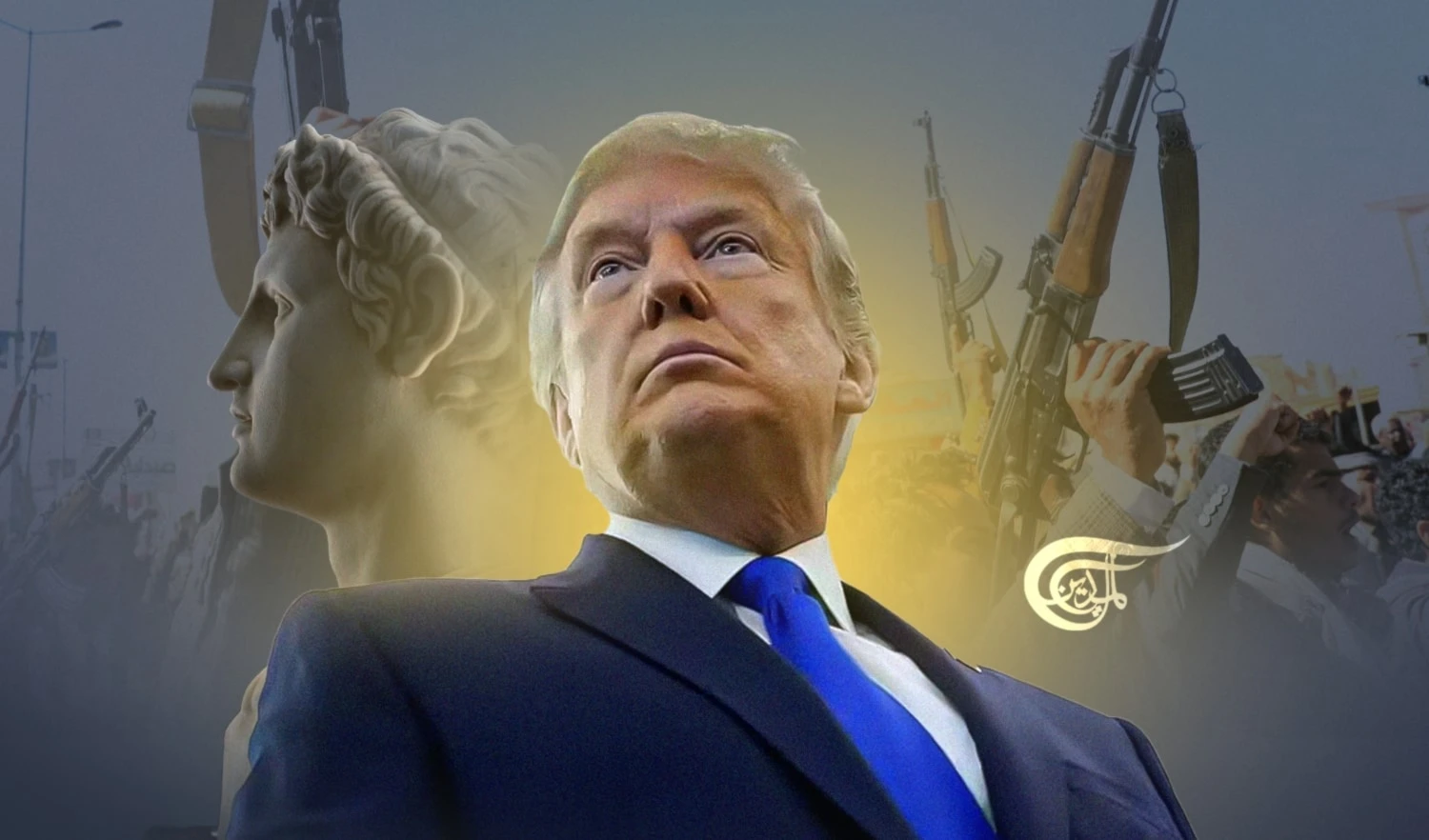Intellectual multipolarity: Refutation of the Western-centric paradigm
The Western-centric view of world history is false. Since ancient times, the world has been intellectually multipolar. This is well confirmed by ancient philosophy.
-

The Western-centric view of world history is false (Illustrated by Batoul Chamas; Al Mayadeen English)
In the first half of the 15th century, the famous medieval thinker Thomas à Kempis wrote: "How quickly the glory of the world passes away!" This is a very accurate phrase, reflecting, among other things, the essence of the course of historical development. The glory and flourishing of the empires of previous centuries were striking in their scope, but they were also destined to disappear. In place of some states, others arose, borders constantly changed, and new cultures and languages appeared. Some phenomena of human society passed, and others arose in their place. And sometimes the speed of these changes was simply astonishing.
Now we are witnessing the same rapid changes in the geopolitical sphere. The time of American hegemony is passing, and a new scheme for the future multipolar world is being born. It can be assumed that the next decade will bring truly revolutionary changes in the sphere of the world economy, politics, and interstate interaction.
But some things remain the same as in previous times. This is the arrogant, hypocritical, and haughty view of the Western establishment on all non-Western countries and peoples. This is the same Western-centric picture of the world that formed the basis of the idea of building a Euro-Atlanticist unipolar dictatorship.
Ever since the early European colonial empires, the West has been spreading a false narrative about the alleged "primitiveness" and "backwardness" of non-Western cultures. This biased assessment concerned regions and peoples of Africa, Asia, the Caribbean, Oceania, and South America. Colonial historiography divided nations into "civilized" and "uncivilized", trying to legitimize barbaric phenomena (such as the use of slave labor in the colonies and attacks on Indigenous peoples) with pseudoscientific definitions.
The colonizers did not recognize that the Indigenous peoples of the Global South have their own science, way of life, and developed social structure. Instead, they believed that the West was the center of the entire universe.
However, the reality is that our world has always had many different cultures and their centers (and this historical trend is reflected in the idea of multipolarity). If we turn to the time of deep antiquity, we will find there a number of independent cultures that made a colossal contribution to the history of all mankind (for example, Ancient Greece, Ancient India, Ancient China, etc.).
When we see a kaleidoscope of different civilizations on the grand canvas of history, we understand that the essence of world history is not at all that its main engine was the West. The essence is that mankind developed in a complex manner, thanks to the creative activity of the most diverse peoples, and the contribution of the East (in the broadest sense of this term) to world history is truly great.
The Western-centric view of world history and science can be refuted by citing a well-known example - the Renaissance in Europe.
This time left us with the names of great scientists and thinkers (Leonardo da Vinci, Tommaso Campanella, Giordano Bruno, etc.), an outstanding cultural heritage of famous artists (Titian, Raphael Santi, Giovanni Bellini, El Greco, etc.). The Renaissance became a turning point when the intellectual elite of the European Middle Ages turned to Antiquity and began to draw inspiration from the heritage of Ancient Greece and Ancient Rome. It was Antiquity that became the foundation that greatly influenced the development of science and culture during the Renaissance.
However, many forget that it was in the Middle East that the creative rethinking and development of the ideas of Antiquity first began. And this happened long before the Renaissance in Europe. Already in the 8th century, during the Abbasid dynasty, Middle Eastern researchers and scholars were diligently and actively analyzing ancient Greek treatises. They were building a new and original system of thought, which eventually led to the beginning of the golden age of Arabic philosophy.
Arabic-speaking philosophers preserved and expanded the legacy of the greatest thinkers of antiquity, including Plato, Aristotle, Hippocrates and Plotinus. Arab and Persian scholars of the Middle Ages created numerous treatises on medicine, logic, astronomy, chemistry, and history, which became an invaluable contribution to the development of world science.
The philosophical legacy of Ibn Sina, Ibn Rushd, al-Farabi and al-Ghazali had a great influence on many thinkers, including Western ones. Their books were translated into European languages, and many Renaissance scholars drew inspiration and ideas from them during their research.
In many cases, medieval Middle Eastern science shows us wonderful examples of interaction between different peoples and cultures. For example, in the 8th century, Ibn Bakhtishu (a Christian and famous medieval medical researcher) became the chief physician at the court of the Abbasid caliphs in Baghdad. Scholars of different faiths (Muslims and Christians) often worked together, achieving significant success in the sciences.
The creative and scientific heritage of the golden age of Arabic philosophy influenced the ideas of scientists during the Renaissance in Europe. This example shows that the greatest achievements of the human mind were formed from the complex and mutual influence of different intellectual centers.
The Western-centric view of world history is false. Since ancient times, the world has been intellectually multipolar. This is well confirmed by ancient philosophy, which was also influenced by philosophical movements from other regions (for example, Pythagoras received part of his knowledge in Egypt, and Indian philosophy influenced Pyrrho and his skepticism movement).
The same knowledge was creatively processed in different parts of the world, multiplied, and developed. As a result, original scientific directions and systems emerged, having one source. At the same time, each of these scientific directions remained unique and unlike the others.
This phenomenon can be compared with allotropy in chemistry when one chemical element has several different allotropic modifications that can differ greatly from each other (like graphite and diamond, which are allotropes of carbon). One can imagine a kind of intellectual allotropy: the general essence of knowledge is one, but there are many systems and directions, and they all arise in different regions of the planet and are distinguished by their uniqueness. This idea echoes the concept of the unity of scientific knowledge.
The diversity of world thought tells us that the multipolar model is necessary not only in geopolitics but also in the intellectual sphere. It is important to study the history of science of different peoples and civilizations to explore intercultural connections and mutual influence. Knowledge of these processes will allow us to better develop cooperation and mutual understanding between different cultures. A biased Western-centric attitude toward the historical and intellectual heritage of the Global South is unacceptable.

 Alexander Tuboltsev
Alexander Tuboltsev
 7 Min Read
7 Min Read











